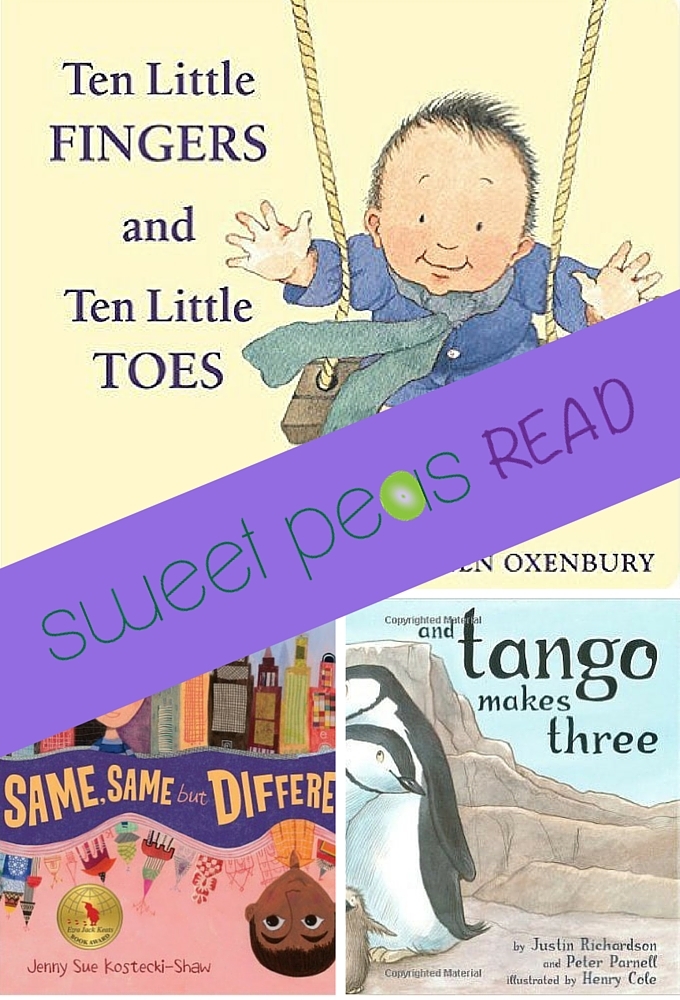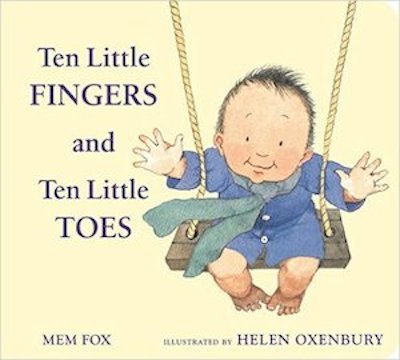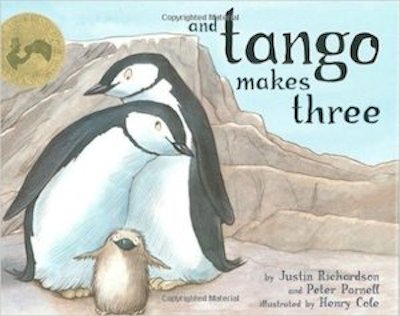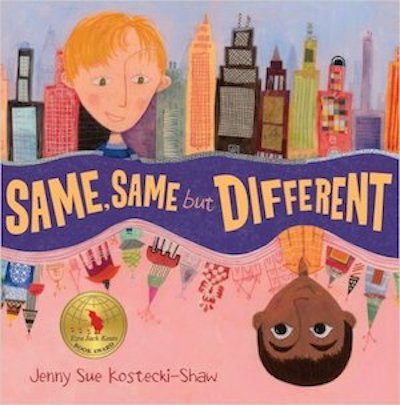
“They won’t learn what we don’t teach.”
One of my best friends, Dr. Samantha Sweeney, wrote this to me in a text last week when I was telling her a story about a recent visit we took to our local children’s museum. Em and I were in a play nursery, cuddling and giving “doctor checkups” to the many babies in the area, when I noticed that she was showing a preference for playing with the babies with light skin. In the moment, I was surprised because we live in a diverse neighborhood in a large, diverse city. Why is she doing that? She’s only two and a half, how does she see these differences already? What do I do? I quickly channeled my inner-Dr. Sweeney and thought, “How can I turn this into a teaching moment?” Because, after all, they won’t learn what we don’t teach.
Dr. Sweeney is the founder of Culturally Competent Kids (CCK), whose mission is “to change the paradigm of how we all talk about cultural issues in order to help children develop the necessary 21st century skill of cultural competence.” She teaches workshops and classes, presents at conferences, and provides consultation on this very important topic of how to “positively shape children’s perceptions of what diversity is and how it impacts them and their lives.” This supermom also runs her own DC-based private practice called Family Psychological Services of Capitol Hill, and has an awesome husband and two kids…whew! If that wasn’t enough, she also writes a great blog through CCK that speaks to everything from the more practical (“3 Quick Tips to Use the New Barbies”) to the scientific (“Brain Development and Diversity” ~ fascinating stuff!). She gives great tips for how to talk to kids about race, from babies (yes, babies!) and toddlers through teenagers and young adults.
To finish the story, I myself picked up a baby with darker skin from a nearby pretend nursery crib and started to play. I wrapped her in a blanket and rocked her, and then Em and I read a book to the baby. I used that moment to talk about how babies (and people in general) have all different skin colors, different hair colors, different eye colors, and it’s okay to play with all kinds of baby dolls. Em replied, “Ok!” and happily walked away to find the stethoscope.
I don’t know how much of my lesson sank in that afternoon, but you can bet it won’t be the last time we talk about diversity. When I recounted my story to my friend Samantha, she reassured me that I wasn’t alone in my experience…but it still didn’t sit well with me. I wanted to do more, to teach her more somehow. It’s such a hard topic to broach, though…where do I begin? Her advice?…Books! Dr. Sweeney offers an expansive list of books on her site that focuses on diversity and diverse characters, so this month, we’re doing just that. This month, Sweet Peas READ…
Ten Little Fingers and Ten Little Toes
By Mem Fox, Illustrated by Helen Oxenbury
Everyday, in every place around the world, babies are born. Ten Little Fingers and Ten Little Toes by Mem Fox, illustrates just how different babies can be…babies are born in tents, on the ice, in big cities, and on hilltops…with different eye colors, different hair colors and different skin colors…in poor health, in good health, and with all sorts of situations in between. But you know what? They all have ten little fingers and ten little toes.
I LOVE this book and have been reading it to Em since she was an infant, as it came from my sister-in-law who graciously passed down boxes of children’s books to us when Em was born. I love the lesson that it shares about the things that make us different and how we’re also so very much the same. And the ending of this book? Completely adorable. And a great way to give your little one some extra snuggles.
And Tango Makes Three
By Justin Richardson and Peter Parnell, Illustrated by Henry Cole
And Tango Makes Three, by Justin Richardson and Peter Parnell, is the sweet story about one unique family of penguins that lives at the Central Park Zoo. Parents and children visit the zoo, of course, but there are also animal families that live in the zoo. Roy and Silo, two of the penguins at the zoo, are a couple…and they’re both boys. The zookeeper notices their love and their desire to grow their family like the other penguin couples, so one day, he places an egg on their nest. After much love and care for their egg, something amazing happens to Roy and Silo…they become fathers. And they call her Tango, because you know, “It takes two to…”
The best part about this adorable story…it’s TRUE. It’s a true story and you can go to Central Park Zoo today to see this penguin family at play. Neat, huh?
I love this book because it highlights one type of family that isn’t talked about as much when we talk about diversity with children. Roy and Silo’s story highlights the LGBTQ (Lesbian, Gay, Bisexual, Transgender, Queer) community in such an accessible way. And with conversations about diversity, it’s important to teach kids about all different kinds of families. The important lesson here is that Roy, Silo and Tango are just like every other family. A few days after I read this story to Em, she said “I have a mama and a dada. The penguin had two dadas.” Yes! Yes, there are all different kinds of families.
Same, Same But Different
Two boys, two different worlds…but are they really so different? In Jenny Sue Kostecki-Shaw’s colorful book, Same, Same But Different, we meet two pen pals from different parts of the world, who find out they’re not so different after all. Elliot is from the United States and Kailash is from India, but through their letters to each other, they learn that they both live with their families, they both have animals, they both ride a bus to school and they both have special ways to say “hello” to their friends. Even though those families, animals, buses and friendships look a lot different in America and India, their “worlds” are a lot more similar than they thought.
“Same, same but different” is a popular saying that natives of Nepal and India use to compare cultures. And this story, too, is based on real-life events from the author’s life and travels to Nepal. I really liked this book. It gets at the heart of our differences, but brings it back to the idea that even though we’re ALL different in many ways, we’re really very much alike as well. This one is new to us as I was searching for books related to diversity, but we really, really liked it. It is probably best-suited for children that are a bit older, maybe early school-age, but Em enjoyed the story and the pictures nonetheless.
Don’t forget to check out Culturally Competent Kids to find more books related to Diversity!
What does your “sweet pea” like to read?




 Samantha says
Samantha says
March 1, 2016 at 6:52 AMThanks for the shout-out and for putting yourself out there to talk about this topic! These are such great book choices too – three of my faves! Can’t wait to re-read them with my kiddos!
 Sally says
Sally says
March 1, 2016 at 12:14 PMI think your work is so important…diversity is not something I thought about explicitly teaching to Em, but I know now it’s so important. And I hear the things we talk about coming out in her conversations, and in her play…so neat.
 Samantha says
Samantha says
March 1, 2016 at 4:15 PMI love it! Keep me posted about those conversations! If they’re consistent-they get so much easier!
 Carol says
Carol says
March 1, 2016 at 8:11 AMI love this post! Diversity is such an important topic and I am delighted that you chose to highlight it and provide concrete suggestions and resources
I continue to be impressed by how your site has evolved. I look forward to reading it!
 Sally says
Sally says
March 1, 2016 at 12:12 PMThanks, Carol! I agree. I’m so inspired by your wonderful daughter and the work she’s doing!
 Erin says
Erin says
March 1, 2016 at 9:30 AMLove it! Thanks for sharing, Sally!
 Sally says
Sally says
March 1, 2016 at 12:11 PMThank you, Erin! I hope you and your family are doing well.